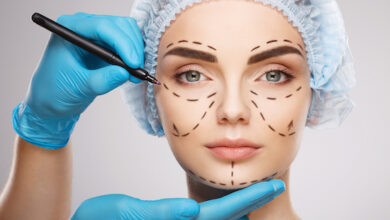PRP Hair Restoration: How Does It Work?

Hair loss can feel frustrating and overwhelming, but advancements in cosmetic treatments now provide non-surgical options for addressing the problem. Platelet-rich plasma (PRP) hair restoration has gained popularity as a minimally invasive treatment for individuals seeking to improve hair density and regrowth. Knowledge about PRP hair restoration will helo you know how it works, who it’s for, and when to seek professional advice.
What is PRP Hair Restoration?
PRP hair restoration is a procedure that uses the patient’s own blood plasma to promote healthier hair. Plasma is rich in platelets, which contain growth factors believed to stimulate hair follicles. A specialist extracts plasma from a blood sample, processes it to concentrate the components, and injects it into areas of thinning or receding hair. The goal is to create an environment that encourages the hair follicles to grow and thrive.
This treatment is part of a broader trend in regenerative medicine, which focuses on using the body’s natural elements to heal and restore. While not a miracle cure for hair loss, PRP aims to enhance existing hair growth while potentially slowing further loss.
How Does PRP Work?
The process begins with a simple blood draw, usually from the arm. The blood is then placed into a centrifuge, a machine that separates its components by spinning at high speeds. This process isolates platelet-rich plasma, which is the portion used for injection.
A specialist then numbs the treatment area on the scalp to create patient comfort. Using fine needles, small amounts of the concentrated plasma are injected directly into targeted areas of the scalp. Each session typically takes 30 to 60 minutes, and multiple sessions over several months are often recommended to achieve the best results.
Maintenance treatments may also be necessary to sustain improvements. It’s key to note that results can vary from person to person and often depend on factors such as the severity of hair loss and overall health.
Who is a Candidate for PRP Hair Restoration?
PRP hair therapy is suitable for individuals experiencing mild to moderate hair thinning or those in the early stages of hair loss. It may also benefit people with androgenetic alopecia, commonly known as hereditary hair loss, which causes thinning around the top of the head and crown. Candidates should have realistic expectations. PRP is not typically effective for individuals with complete baldness or advanced hair loss, as it relies on existing follicles to stimulate regrowth. A consultation with a specialist is the best way to determine whether this treatment aligns with your goals.
Which Specialist to Seek and When?
If you’re considering PRP hair treatments, it’s beneficial to consult a trained professional who specializes in hair restoration or dermatology. These specialists will evaluate your hair loss pattern, medical history, and overall suitability for the treatment. They can also provide clear guidance on whether PRP is the right option for you or if other treatments might be more effective.
It’s a good idea to schedule an appointment if you’ve noticed significant hair thinning, experience excessive shedding, or feel concerned about changes in your hair’s density. The earlier you address hair loss, the more options you may have.
A Boost for Your Confidence
PRP hair therapy offers a non-surgical option for those seeking to improve their hair growth and restore confidence. While it’s not a one-size-fits-all solution, the procedure’s minimally invasive nature and potential benefits make it a compelling choice for many. If you’re ready to explore PRP hair restoration, consult a specialist who can guide you through the next steps. Take that first step today and learn how PRP could support your hair restoration goals.





